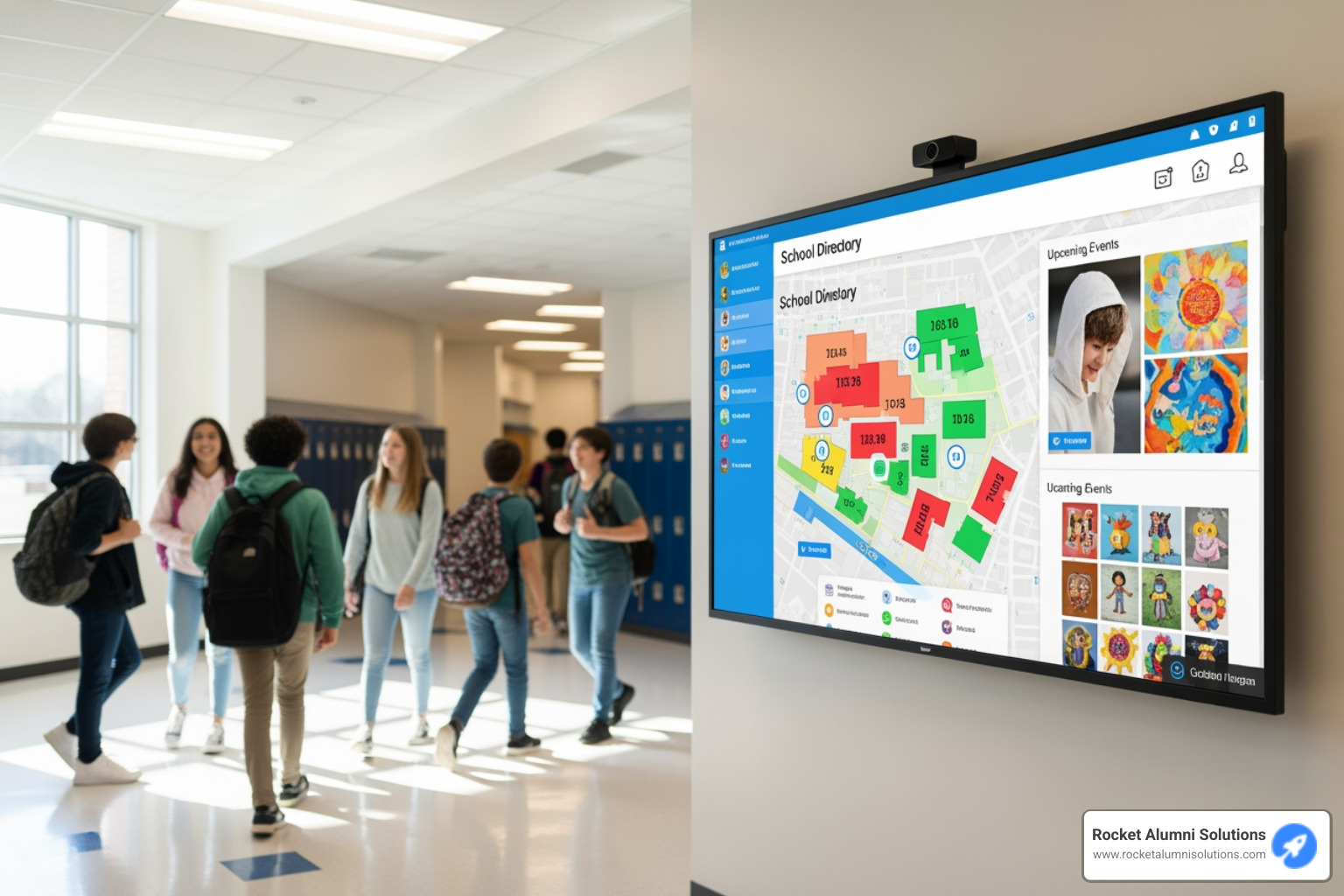Understanding Donor Recognition and Its Importance
Donor recognition plaques play a crucial role in building community acknowledgment and enhancing a sense of belonging.
- What are they? These plaques serve as a physical tribute to those who have contributed to a cause or institution.
- Why are they used? They express gratitude and can encourage further donations by publicly honoring donors.
In a world where connections are increasingly important, acknowledging community contributions is essential. It turns a simple act of giving into a public celebration that fosters community pride and belonging. Successful institutions like Lawrence Tech University use donor recognition to enhance engagement and donations by creatively naming light sources after donors.
Consider a plaque as more than just a name on the wall. It's a token of appreciation that can inspire ongoing support and create a legacy of generosity.

Donor recognition plaque vocab explained:
The Importance of Donor Recognition Plaques
Gratitude is at the heart of every donor recognition plaque. These plaques are not just about listing names; they are a powerful way to say "thank you" to those who have contributed. When donors see their names on a plaque, it reinforces the message that their support is valued and appreciated. This simple yet meaningful gesture can strengthen relationships and encourage ongoing generosity.
Inspiration is another key benefit of donor recognition plaques. By publicly acknowledging donors, these plaques can motivate others to contribute. For instance, the donor recognition wall at the TIFF Bell Lightbox Theatre not only honors past contributors but also inspires future donors by showcasing the impact of their support on the community. When people see the tangible difference made by donations, they are more likely to be inspired to give.
A donor recognition plaque serves as both a thank-you and a source of inspiration. It transforms a simple act of giving into a celebrated moment that encourages continued support. As seen with Middlebury College's Peterson Athletic Complex, these plaques are more than just decorative elements; they play a crucial role in building a culture of generosity and community connection.
By recognizing donors in this way, institutions create a ripple effect of goodwill and engagement, making donor recognition plaques an essential tool in fostering a supportive and thriving community.
Designing the Perfect Donor Recognition Plaque
Creating the ideal donor recognition plaque isn't just about aesthetics—it's about capturing the spirit of gratitude and inspiration in a tangible form. Let's break down what makes a plaque perfect for your organization.
Design Expertise
Design is where it all begins. A well-designed plaque not only looks good but also communicates the values and mission of your organization. Expert designers work closely with you to ensure that every detail aligns with your vision. No templates here—only custom designs custom to your unique needs.
For example, at Middlebury College's Peterson Athletic Complex, the design of their donor recognition plaques reflects the institution's commitment to both tradition and innovation. This careful attention to design helps create a lasting impression on both donors and visitors.
Materials Matter
The choice of materials can significantly affect the look and feel of your plaque. Options range from classic metals like brass and bronze to modern materials like glass and acrylic. Each material offers distinct advantages:
- Brass and Bronze: Timeless and durable, these metals provide a classic look.
- Glass and Acrylic: Sleek and modern, perfect for contemporary settings.
- Wood: Adds warmth and a natural touch to any display.
Combining different materials can also create a unique and striking effect. For instance, etched glass paired with a bronze nameplate can offer an neat and sophisticated appearance.
Customization for a Personal Touch
Customization is key to making each plaque special. You can personalize plaques with donor names, messages, and even images. This level of customization ensures that each donor feels uniquely recognized and appreciated.
A great example of customization is the donor wall at the TIFF Bell Lightbox Theatre, where the plaques not only list donor names but also tell the story of their contributions. This approach turns a simple recognition piece into a narrative that connects emotionally with both donors and the community.
Creating a donor recognition plaque is more than just a design project. It's about crafting a meaningful tribute that honors your donors and inspires future generosity. By focusing on design, materials, and customization, you can create a plaque that truly reflects the heart of your organization.
Creating a Sense of Belonging Through Recognition
Recognition goes beyond just saying "thank you." It's about fostering a sense of belonging and community among donors. When donors see their names on a donor recognition plaque, they feel an emotional connection to the cause. This connection is vital for long-term engagement.
A well-designed recognition piece can have a profound impact on the community. It serves as a public acknowledgment of generosity and commitment. For example, the Lawrence Tech University named their light sources to recognize donors, which not only beautified the campus but also encouraged more donations by showcasing appreciation in a unique way.
When a community sees the contributions of its members celebrated, it inspires others to get involved. This ripple effect can lead to increased participation and support for the organization.
Emotional Connection
Donor plaques are more than just names on a wall. They tell a story. Each name represents a personal connection to the organization's mission. These stories evoke emotions—pride, gratitude, and a shared vision for the future.
At the Mississippi Museum, for instance, the donor display wall serves as a testament to the collective effort of individuals who believe in the museum's mission. Such emotional connections make donors feel like an integral part of the organization, strengthening their commitment.
Secondary Effects
The secondary effects of recognition are significant. When donors feel appreciated, they are more likely to continue their support. This sense of belonging can lead to increased donations and volunteer efforts.
Moreover, recognizing donors publicly can improve their personal and professional networks. Donors often take pride in their association with a respected organization, which can lead to new opportunities and collaborations.
The Nova Network at Villanova University is a prime example. By fostering a strong sense of community, they successfully engaged over 78,000 donors, half of whom were first-time contributors. This shows the power of creating a belonging and recognition culture.
By focusing on community impact, emotional connection, and the secondary effects of recognition, organizations can build a thriving donor network that benefits everyone involved.
Touchstone: Interactive Recognition for Schools and Communities
Imagine walking into a school or community center and being greeted by a vibrant, interactive touchscreen. This is not just a digital screen; it's a dynamic platform that celebrates achievements and fosters engagement.
Engagement Through Interaction
The Touchstone interactive touchscreen is like a digital scrapbook for schools and communities. It allows users to explore stories, achievements, and histories with a simple touch. This interactive element captivates people, making them more engaged with the content.
For instance, a donor recognition wall can come alive with interactive features. Instead of static plaques, donors' contributions can be highlighted with photos, videos, and personal stories. This creates a richer, more engaging experience that goes beyond traditional recognition methods.
Digital platforms like Touchstone offer a modern twist on recognition. They are not just about displaying names; they are about telling stories and building connections. By changing traditional plaques into digital formats, organizations can offer a more engaging and informative experience.
With Touchstone, schools and communities can easily update content, ensuring that recognition remains current and relevant. This flexibility is crucial for maintaining long-term engagement and interest.
An interactive platform like Touchstone does more than just display information. It helps build a sense of belonging and community. When people see their contributions celebrated in such an engaging way, it reinforces their connection to the organization.
The Mississippi Museum's donor display wall is a great example of this. By incorporating interactive elements, they have created a space that not only honors donors but also educates and inspires visitors. This approach strengthens the community's connection to the museum and its mission.
In summary, the Touchstone interactive touchscreen transforms donor recognition into an engaging, community-building experience. It combines the power of digital platforms with the emotional impact of personal stories, creating a space where donors and community members feel truly valued and connected.
Frequently Asked Questions about Donor Recognition Plaques
What do you write on a donor recognition plaque?
A donor recognition plaque is more than just a nameplate; it's a heartfelt expression of gratitude and appreciation. The wording should reflect the significance of the donor's contribution.
Common elements include:
- Donor's Name: The primary focus, often in bold or larger font.
- Contribution Details: Mention the specific project or fund supported.
- Thank You Message: A simple "Thank you for your generous support" can make a big difference.
- Organization's Name and Logo: Reinforces the connection between the donor and the organization.
The aim is to make the donor feel valued and appreciated for their support.
How do donor recognition walls inspire future donations?
Donor recognition walls serve as powerful motivators for future donations. Public recognition of donors inspires others to contribute by showcasing the impact of generosity.
Here's how they work:
- Visibility: Seeing names prominently displayed encourages others to join the ranks of honored donors.
- Inspiration: Stories of impact and success can motivate potential donors to contribute.
- Social Proof: People are often influenced by the actions of others; a wall filled with names suggests a thriving community of supporters.
For example, at the TIFF Bell Lightbox Theatre, the donor wall not only acknowledges contributions but also inspires new donors by highlighting the impact of their support on the arts community.
How can donor plaques be updated easily?
Updating donor plaques should be a seamless process to accommodate new contributions over time. Here are some strategies for manageability and future updates:
- Modular Design: Use interchangeable panels or sections that can be easily replaced or updated.
- Digital Integration: Incorporate digital elements that allow for quick updates, such as adding new names or stories.
- Balance Costs: Ensure that the cost of updates aligns with the donations received, maintaining a sustainable recognition program.
For instance, the Mississippi Museum employs a system that allows for easy updates, ensuring that donor recognition remains current and inclusive.
By planning for future updates, organizations can maintain a dynamic and engaging recognition wall that continues to motivate and inspire.
Conclusion
At Rocket Alumni Solutions, we believe in the power of recognition to create a lasting impact. By using donor recognition plaques effectively, we can foster a sense of community and belonging. When donors feel appreciated, they are more likely to continue supporting the causes they care about.
Recognition isn't just about saying "thank you." It's about building relationships that last. Our digital platforms, like the Touchstone interactive touchscreen, help schools and communities engage with their supporters in meaningful ways. This engagement leads to stronger bonds and a more connected community.
The impact of a well-crafted donor recognition strategy goes beyond individual plaques. It creates a ripple effect, inspiring others to contribute and be part of something bigger. By recognizing donors, we not only honor their generosity but also strengthen the foundation of support for future endeavors.
In conclusion, Rocket Alumni Solutions is dedicated to helping organizations build and maintain these vital connections. Through innovative solutions and thoughtful recognition, we can create a legacy of support and community that endures for years to come.
















































































































































































































































































































